The Pound-to-Australian-Dollar Rate: Breakout to the Downside Underway
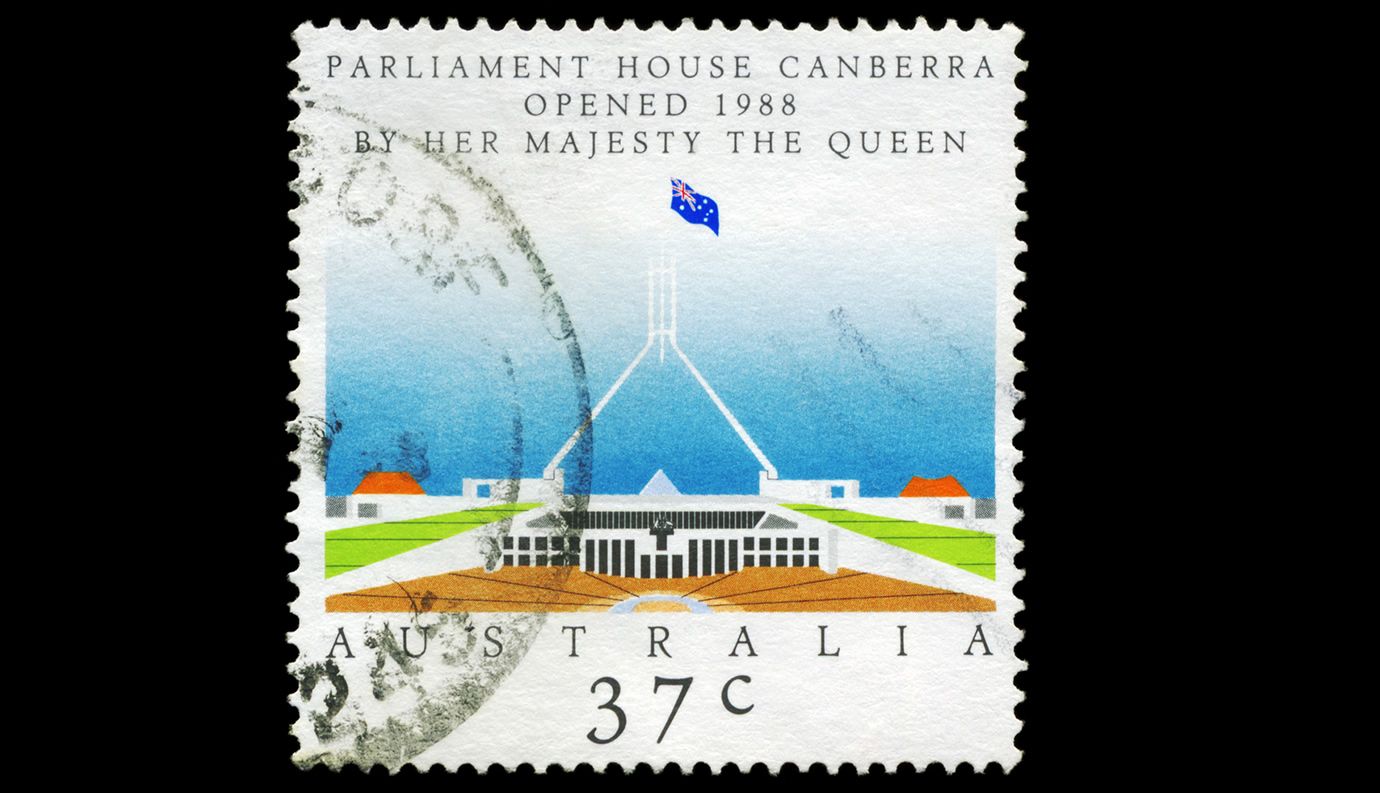
© AlexanderZam, Adobe Stock
- GBP/AUD has broken out of a significant trend channel.
- A large, bearish move to the downside now likely underway.
- GBP eyes incoming Prime Minister as AUD looks to RBA's Lowe.
The Pound-to-Australian-Dollar rate is set to begin trading around 1.7742 when the market opens after falling back to its January lows in the previous week, although the pair is in a downtrend and the charts are arguing for more losses in the days ahead.
The 4-hour chart, which we use to determine the short-term outlook including the next 5 days, shows the pair has broken out below the lower borderline of a large rising trend channel. This is a very bearish sign and strongly suggests more downside will follow.
Although the pair recovered after the break, rising back up to retouch the lower channel line, this is likely just a temporary throwback move that will be followed by a renewed move to the downside and new lows for the exchange rate.
A break below the July 18 low at 1.7672 could see the downtrend extend as far as 1.7400 in the short-term.
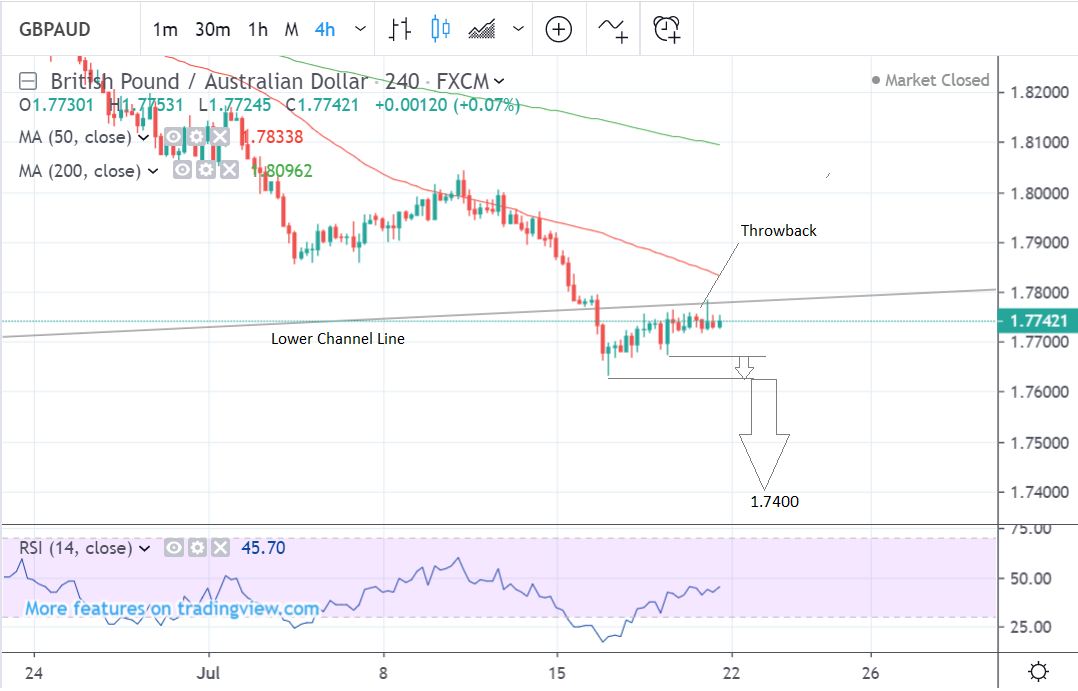
Above: Pound-to-Australian-Dollar rate shown at 4-hour intervals.
The daily chart, which we use to give us an indication of the outlook over the medium-term including the next month ahead, shows the same sideways trend as on the 4-hour chart but with deeper targets. The target for the move down on the daily chart is 1.7200.
The relative-strength-index (RSI) momentum indicator is corroborating the bearish outlook as it too is making lower lows in tandem with the exchange rate.
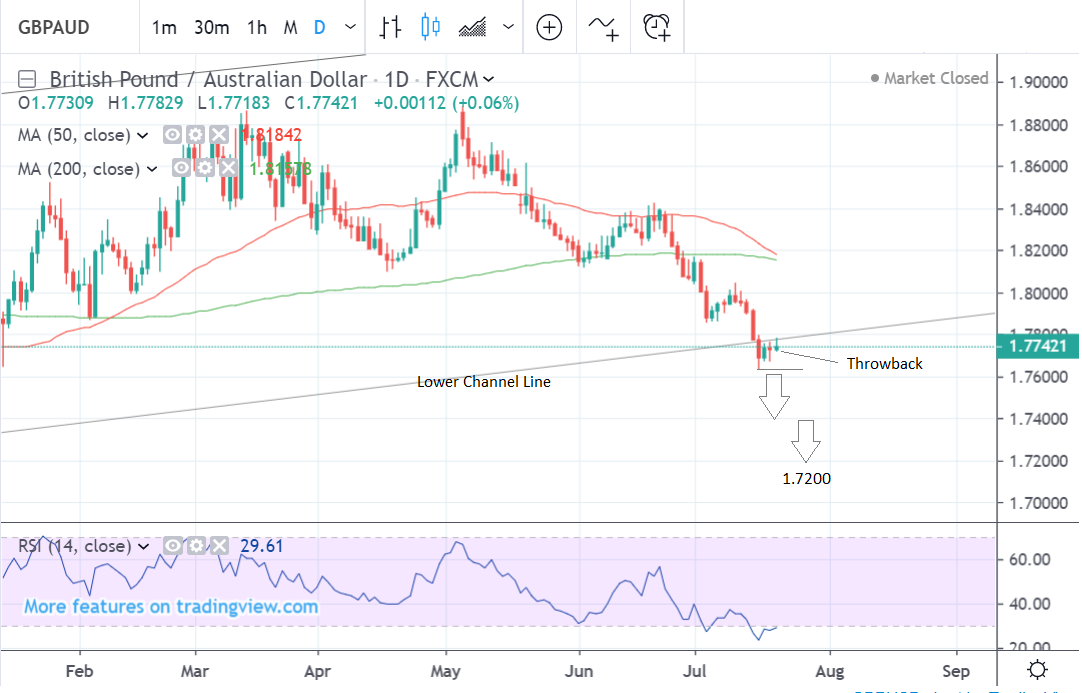
Above: Pound-to-Australian-Dollar rate shown at daily intervals.
The weekly chart, which we use to give us an idea of the longer-term outlook including the next few months ahead, shows the pair in its rising channel. It also shows how the market has pierced the underside of the channel last week and is now threatening to break lower.
The long-term term target is equal to the height of the channel extrapolated lower by 61.8%, which indicates a move toward 1.7000 over the next few months or so.
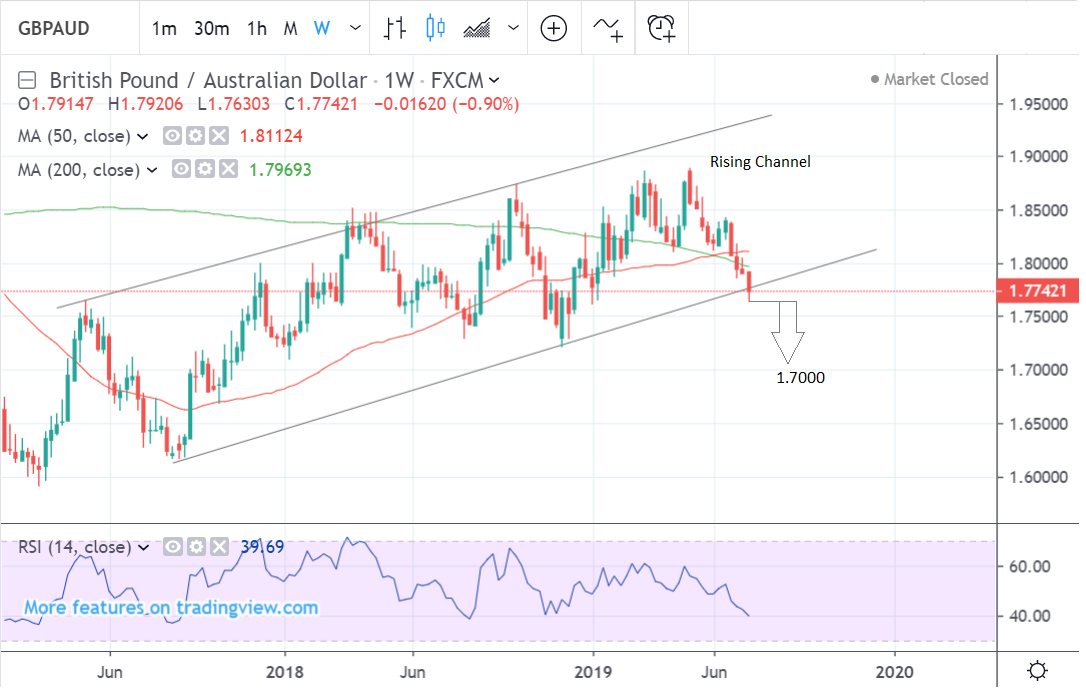
Above: Pound-to-Australian-Dollar rate shown at weekly intervals.
AA
The Australian Dollar: What to Watch
The main events impacting the Australian Dollar in the week ahead are likely to be global and geopolitical in nature, with the only local data being a speech from Reserve Bank of Australia (RBA) Governor Philip Lowe.
There is no Chinese data to talk of, and trade talks between the U.S. and China appear to have hit another roadblock after President DonaldTrump said a deal was a ‘long way off’ and asked for an investigation into Google’s links with China. This came despite Treasury Secretary Steve Mnuchin’s recent claim that a deal is close.
As far as Lowe’s speech goes, it will be seen in the context of the RBA’s official stance, which is neutral and ‘wait and see’.
Recent labour market data came out below expectations and it will be interesting what Lowe’s comments are regarding that. This is especially the case given the RBA have said: “we will monitor developments in the labour market closely and adjust monetary policy if needed".
On the geopolitical front, more tensions in the Strait of Hormuz could impact on financial markets if they turn ugly and become an international incident.
The Iranian special forces boarded and held a passing UK tanker in the Strait over the weekend in retaliation for the UK boarding and stopping an Iranian tanker in the strait of Gibraltar.
Whilst further saber-rattling could drive up oil prices, it's not so integrally connected with Australia to spark a rout in the Aussie Dollar, although higher oil prices could become another headwind for the global economy and that could impact the Aussie over time if it came to pass.
AA
The Pound: What to Watch
The major driver of the Pound this week is likely to be the announcement of the winner of the Conservative Party leadership election on July 22, but with little difference remaining between the two candidates' stated Brexit policies, the result may not cause as much volatility as previously expected.
Jeremy Hunt is seen as more ‘moderate’ and less likely to take the UK out of the EU without a deal, so his election might provide some relief for Sterling. The opposite is true of Boris Johnson, who is the bookmakers' favourite to win, although such an outcome is likely in the price of the Pound by now.
According to betting website oddschecker, Johnson's chances of winning have increased to 97.08%. On the data front the major release is the CBI Industrial Trends survey, which on Tuesday and a speech from Bank of England’s (BOE) chief economist Andy Haldane on the same day.
Andy Haldane is set to make a speech at 13.15 on Tuesday. The market will be keen to hear his views on the economy after recent mixed data. Previously the BOE had been one of the few major central banks not expected to cut interest rates, and was actually talking about raising them. Much depends on Brexit of course. Will Haldane continue to endorse a marginally hawkish stance, or is he going to turn more neutral? On Tuesday we shall see. If he changes his tune it could weigh on Sterling.
The CBI survey is usually closely followed because it provides timely insight into changing industrial trends. Industrial production unexpectedly plunged -2.7% in June and although it rebounded 1.4% in July it was a worrying result, and the worst since 2013. Investors will therefore be keen to see what the CBI data reveals when it is released on Tuesday at 11.00 BST and whether the sector is likely to see more declines in the future or not.
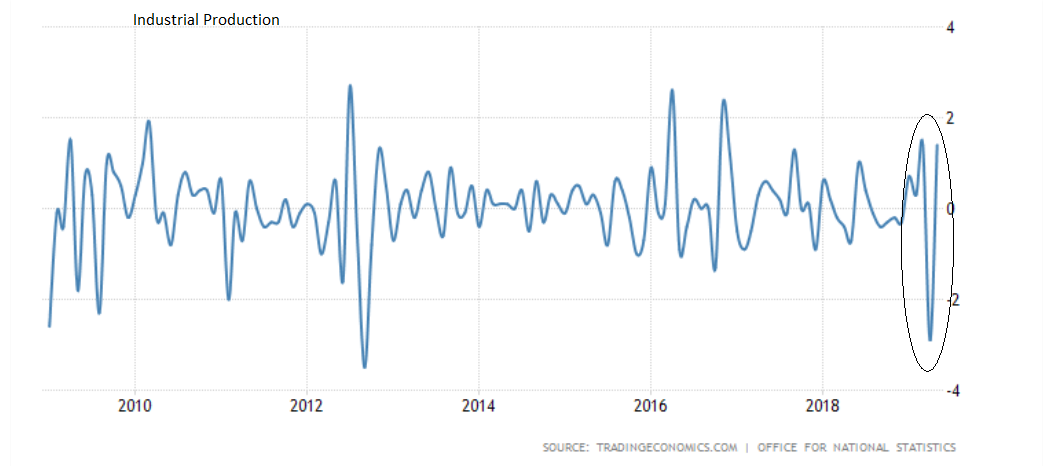
Above: Changes in UK industrial production. Source: Tradingeconomics.com.
Time to move your money? Get 3-5% more currency than your bank would offer by using the services of foreign exchange specialists at RationalFX. A specialist broker can deliver you an exchange rate closer to the real market rate, thereby saving you substantial quantities of currency. Find out more here.
* Advertisement




